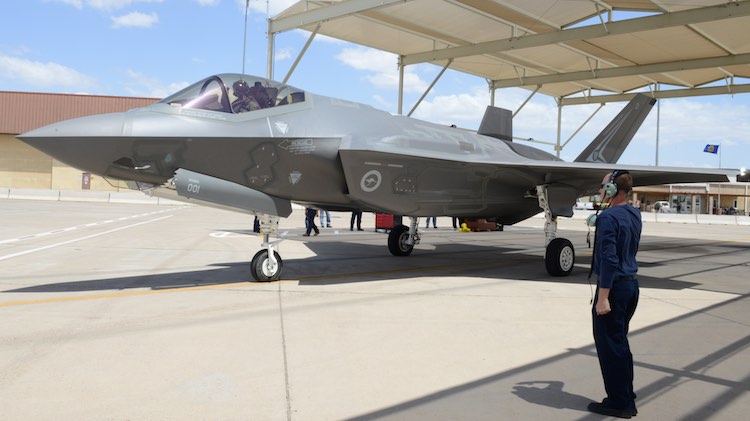|
|
||
|
|
||
|
Privacy Policy | Editorial Policy | Profit Policy | Join the Association | List of Members | Contact us | Index | Links |
||
|
Back Go to page: 1 2 3 4 5 6 7 8 9 10 11 12 13 14 15 16 17 18 19 20 Forward
|
||
|
|
||
|
Pedro’s Patter.
Excerpt from Jeff’s book – Wallaby Airlines.
Tuesday, 9th August, 1966
The front beach was a black void as I walked down to breakfast in the morning darkness to our dining room, which was a block away from the Villa Anna behind the Sergeants Mess. A few scattered lights indicated others were up early. Far out in the bay, lights twinkled on anchored ships. I had spent Saturday and Sunday flying short trips to Tan Son (Saigon), Nhut, Bien Hoa and back with the CO and ‘Blue’ McDonnell. Blue’s real name was John Terrence and some people referred to him as Terry. I never heard him called anything but ‘Blue’. My diary entry for Monday records one word: ‘diarrhoea’. Apparently I was not up to much else. The washbasins in the Villa had signs over them saying that the water was not potable. Even so, most people cleaned their teeth with it. So if only for this reason it was not a surprise to come down with a dose of the trots. The other blokes told me that it was a fairly common condition.
|
||
|
|
||
|
Villa Anna. |
||
|
Next day I was back to normal. I was programmed for the 405 Mission, a northbound mail run operating Tuesdays, Thursdays and Saturdays to various MACV (Military Assistance Command, Vietnam) and Special Forces outposts between Saigon and the air force base at Nha Trang. Nha Trang is a large coastal city about 200 miles north-east of Saigon in that part of the country designated the II Corps Military Region by the Americans. The trip was also a left-hand seat check out with Blue McDonnell, the squadron QFI (Qualified Flying Instructor), before I flew as captain myself. So today I was pleased to know that I would do most of the flying.
Any Australian reader would realise Blue got his nickname because of his red hair. The other personality trait that often went with red hair was a volatile temper. Blue did not qualify here. He was quite unexcitable, even under trying conditions, which was a good attribute for anyone involved in flying training. He also had an offbeat sense of humour. You never knew whether he was joking or serious.
Blue flew the first leg out of Saigon himself to show me the defensive spiral descent procedure developed and used by the squadron to minimise exposure to ground fire. In 1966 towns and military bases in South Vietnam were secure ‘islands’ in an unfriendly ‘sea’ of VC-controlled countryside. Connecting roads were unsafe except in a convoy. Even trains, when they operated, included a tank-like carriage with a large calibre weapon to ward off VC attack. Rural and mountain areas, even at a relatively short distance from a major population centre or government outpost, often harboured snipers or worse, small teams of VC irregulars armed with more dangerous, large calibre weapons, who took pot shots at low flying aircraft. Snipers strategically placed around the boundary of an airfield, concealed in patches of jungle, usually had plenty time to aim and fire at aircraft due to the slow speeds used during approach and landing.
To minimise this hazard, 35 Squadron had developed
ground fire
Blue was about to demonstrate the descent procedure to me. We arrived over Ham Tan, our first port of call out of Saigon, at 2500 feet and 165 knots. Staying within about half a mile of the runway, Blue spiralled down, maintaining speed until we were abeam the runway threshold, our landing point. He then throttled back and levelled off until the airspeed came back sufficiently to lower the undercarriage and flaps. After a tight base turn and super short finals, we were on the ground. After this demonstration, I was not surprised our squadron had taken very few hits compared with our American counterparts, who used a more conventional approach technique.
If this procedure was necessary to avoid VC ground
fire, I needed
The aircraft was now under my control. After the drab
Delta, the north was like a Garden of Eden. The terrain changed from
browns to greens, from alluvial plains to purple highlands. Along
the coast, the azure sea sparkled as it can do only under a tropical
sky. Everything looked clean, at least from our cruising altitude. I
felt good. Phan Thiet is a coastal town with its airport clinging to
the top of a windswept cliff. Although the runway wa
Further north was Song Mao. The airfield was built on a narrow plain sandwiched between mountain ranges and the coast, and was short enough to be interesting. More than the usual number of kids crowded out to see us, pushing against the wire barricade bordering the ramp. Three small children, the oldest in a miniature sailor suit and looking more like an American kid, enjoyed a better view from the back of a jeep. They were the children of the province chief, a Vietnamese colonel.
Departing Song Mao, we had to climb overhead beyond the usual 2500 feet to clear the mountain range by a safe margin. The Caribou climbed effortlessly, like a glider, its thick cambered wings picking up thermals induced by the strong south-easterly on the sloping terrain. As we climbed we tracked over a large area pockmarked with bomb craters, the result of an earlier B-52 carpet-bombing. It looked like the surface of the Moon. A strip of jungle almost a mile wide and several miles long had been blasted off the map, along with whoever or whatever was in it at the time. One can only imagine the pandemonium among ground forces when the giant bomber’s load of 1000-pound high explosive iron bombs rained down on them.
Crossing the first mountain range, we saw Cam Ranh Bay glistening in the hot sun. The bay and the surrounding countryside looked particularly beautiful from the air. No doubt if we descended from cruising altitude to fly low level over the small, close-packed towns which dot the way, their shanties elbowing each other greedily for space beside the river, the squalor would be the same as the towns of the Delta. The Americans were developing Cam Ranh Bay from a superb natural harbour surrounded by rolling sand dunes into one of the country’s biggest naval and air bases. The bay was already a major supply port for the II Corps region, its waters crowded with shipping. The adjacent airfield was undergoing a transition from a supply base for C-130 and smaller cargo aircraft to one capable of handling larger cargo aircraft, as well as high-performance fighters and bombers.
Construction teams were busy grading the sand dunes
flat prio
At this level also the decrepit buildings and
shantytown, which are
Parking here was at a premium, the aircraft being
parked nose to nose in eight double rows, making ground manoeuvring
difficult, as I was to find later to my cost. Taxiing in was easy.
Coming out in a tight reverse turn was another matter. The loading
supervisor, a youthful-looking sergeant second grade, pencil on
right ear, clipboard in hand, poked his head through the side door
as we climbed down from the cockpit. ‘Hi, Aussie’, he began
I followed Blue McDonnell over to a two-storey wooden building behind the aircraft lines. ‘TMC is downstairs, Ops [Operations] up top’, he explained as we climbed the steep flight of external steps to the balcony above. Operations had no new information for us, so Blue started back towards the aircraft. It was nearly midday. ‘What about lunch?’ I inquired hopefully, my stomach triggering alarm signals. In my humble opinion, civilised people normally eat something in the middle of the day. ‘There’s a snack bar round the corner’, said Blue ‘but I don’t usually bother. TMC will sell you a Coke.’ ‘Show me the snack bar’, I insisted. The snack bar was a semi-enclosed counter at the end of the building manned by a Vietnamese wearing a white apron and an American-diner style peaked cap. A rough sign advertised meat sandwiches at an exorbitant price. They looked unappetising, but I was determined to eat. ‘Two sandwiches please’, I requested, holding up two fingers. The Vietnamese handed over two pre-wrapped packages. I paid him with a wad of MPC and opened one packet.
The sandwich consisted of a thick slab of dry-
looking
Our first port of call in the mountains was Dalat Cam
Ly, the main airport for the mountain-top city of Dalat (pronounced
Dar Latt). Sixty miles south-west of Nha Trang, Dalat was a
surprisingly "very
Another 60 miles west was Gia Nghia, a US Army Special Forces camp. There were many Special Forces camps scattered throughout the highlands. Each camp was virtually a fortified Montagnard village, the whole population and the Special Forces personnel living inside the boundary. The French originally coined the term Montagnard to describe the ethnic minority peoples living in the highlands. The Special Forces recruited the Montagnards, and trained them in guerrilla warfare. They were willing participants since they had no love of lowland Vietnamese and hated the VC in particular for disrupting their traditional lifestyle. Because the men were diverted from their traditional hunting and gathering activities, they were ‘paid’ for their efforts in livestock and vegetables, flown in by Caribou or C-123.
Gia Nghia was listed in the Aerodrome Directory as a Type 2 runway for Caribous: TYPE 2 – (MINIMUM OPERATIONAL). A facility constructed to provide a sub-standard but operable margin of safety. Operations from this facility will be reasonably efficient, but may be seriously jeopardised under adverse operating conditions.
They were not committing themselves much, were they?
Bulldozing the tops of two adjacent mountains into the
Blue, unflappable as ever, said nothing. Of course,
we had practised STOL approaches and landings back home with the
backup of a full-length runway in case we stuffed up. Here it was
the real thing. The Caribou is a strange beast in the STOL
configuration. It does not really want to fly at the very low speeds
necessary for STOL performance. To get around that, its designers
resorted to aerodynamic trickery by using an incredible wing with
two different aerofoil sections bolted together,
Furthermore, at very low speed a lot of muscle power was required to move the controls to obtain the large control surface deflections required – a bit like an FJ Holden, definitely no power steering there. For these reasons it is easy to understand why even the most proficient pilot found himself in a lather of sweat on a full STOL approach. Having forced the unwilling brute down to a position just over the intended touchdown point, hopefully close to the ground, the pilot then rotated the aircraft to a landing attitude. Since this placed it below stalling speed, the aeroplane then literally fell out of the sky. (Click HERE to see the aircraft tin action)
Having ‘arrived’ on the ground in this fashion the long, forgiving undercarriage legs soaked up the inevitable shock. The only thing left to do was to apply maximum braking and full reverse power and—presto—there you were sitting in a stationary aircraft after a 700–800-foot landing roll trying to look calm and disguise your rapid breathing. Fortunately, few runways required this unnerving performance and most pilots adopted a modified STOL technique, using only 30 degree flap and a higher approach speed, for all but the shortest of them. Back to Gia Nghia, I mentally reclassified it as a ‘modified STOL’ runway.
Blao, our next stop, was also high in the hills. It was shortish, sloping and slippery due to a recent shower of rain on its membrane surface. It was set in the midst of vast tea plantations which, in spite of the war, were surprisingly still operated by a private company. The tea was sold in attractively decorated tins. I later bought several and sent them home as gifts. The loading team here, rifles slung over their shoulders, appeared like wraiths from among the tea shrubs which surrounded the parking area. Having taken the mailbags and whatever else we had for them, they disappeared again without waiting to see us rumbling down the runway towards the gulch at the bottom, the staccato of our exhaust augmentors at take-off power shattering the whispering calm of the plantation.
Ahead of us was the longest leg of the day, a
|
||
|
At a wedding ceremony, the pastor asked if anyone had anything to say concerning the union of the bride and groom. It was their time to stand up and talk, or forever hold their peace. The moment of utter silence was broken by a beautiful young woman carrying a child. She started walking toward the pastor slowly. Everything quickly turned to chaos. The bride slapped the groom. The groom's mother fainted. The groomsmen started giving each other looks and wondering how best to help save the situation. The pastor asked the woman, "Can you tell us why you came forward? What do you have to say?"
The woman replied, "We can't hear in the back."
|
||
|
The F-35.
Australia has committed to 72 F-35A aircraft for three operational squadrons to be based, two at Williamtown and one at Tindal. The second one at Willytown will be a training squadron. Sometime in the future, a fourth operational squadron will be considered and would be based at Amberley, making a total of 100 F-35As.
The first F-35A aircraft will arrive in Australia sometime in 2018 and the first squadron, 3 Squadron, which currently operates the F18 Hornets, will be operational in 2021.
All 72 aircraft are expected to be fully operational by 2023 (a mere 7 years from now).
The F-35A will provide Australia with a fifth generation aircraft at the forefront of air combat technology, to provide a networked force-multiplier effect in terms of situational awareness and combat effectiveness. Capable of supersonic flight whilst retaining stealth, the F-35A has extraordinary acceleration, agility and 9G maneuverability. It is characterised by a low profile design; internal weapons and fuel carriage; advanced radar; electro-optical and infrared sensors with advanced voice and data link communications; and the ability to employ a wide range of air-to-surface and air-to-air weapons.
Defence is currently undertaking an Environmental Impact Statement (EIS) process for the flying operations of the F-35A. A website has been created where you can learn more about the EIS process, subscribe to receive updates, and provide feedback. |
||
|
|
||
|
Back Go to page: 1 2 3 4 5 6 7 8 9 10 11 12 13 14 15 16 17 18 19 20 Forward |
||
|
|

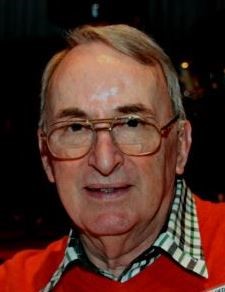
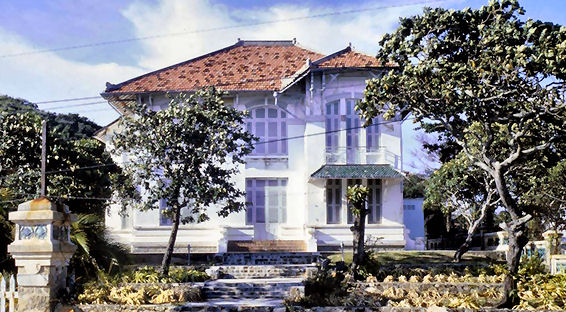
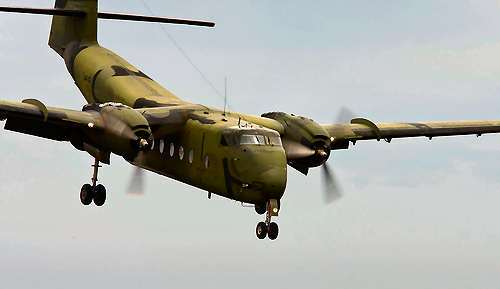 safety
procedures. To start with, it was squadron policy not to cruise
below 2500 feet above ground level. This afforded protection against
small arms fire. In fact, most pilots flew at 5000–6000 feet. The
second procedure was designed to ensure some protection during
approach and landing when the aircraft was most vulnerable.
Approaching the destination airfield, the aircraft was set up in a
tight, high-speed spiral descent over the runway from 2500 feet down
to circuit height, normally 1000 feet. (A circuit consists of a
downwind, a base and a final leg.) At the last possible moment, the
aircraft was slowed so that the undercarriage and flaps could be
extended abeam the point of landing, prior to a tight base turn. It
worked very well. We could never understand why our American
colleagues did not use it.
safety
procedures. To start with, it was squadron policy not to cruise
below 2500 feet above ground level. This afforded protection against
small arms fire. In fact, most pilots flew at 5000–6000 feet. The
second procedure was designed to ensure some protection during
approach and landing when the aircraft was most vulnerable.
Approaching the destination airfield, the aircraft was set up in a
tight, high-speed spiral descent over the runway from 2500 feet down
to circuit height, normally 1000 feet. (A circuit consists of a
downwind, a base and a final leg.) At the last possible moment, the
aircraft was slowed so that the undercarriage and flaps could be
extended abeam the point of landing, prior to a tight base turn. It
worked very well. We could never understand why our American
colleagues did not use it. 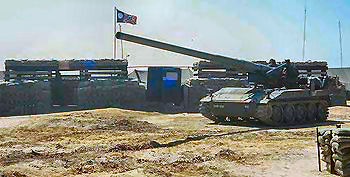 no
further encouragement to use it. Ham Tan was a classic defensive
triangle on a model developed by the US Army Special Forces. The
camp was surrounded by a triangular fortification of sandbags and
trenches with a central lookout tower. The triangular shape gave a
wide field of fire from the trenches when the camp was under attack.
The airfield, a fairly rough gravel runway and parking area, was
outside the triangle running along parallel to one side. It was more
than adequate for our needs. After ten minutes on the ground
dropping passengers and mail, we were soon airborne again heading
for the coast, and Phan Thiet.
no
further encouragement to use it. Ham Tan was a classic defensive
triangle on a model developed by the US Army Special Forces. The
camp was surrounded by a triangular fortification of sandbags and
trenches with a central lookout tower. The triangular shape gave a
wide field of fire from the trenches when the camp was under attack.
The airfield, a fairly rough gravel runway and parking area, was
outside the triangle running along parallel to one side. It was more
than adequate for our needs. After ten minutes on the ground
dropping passengers and mail, we were soon airborne again heading
for the coast, and Phan Thiet. 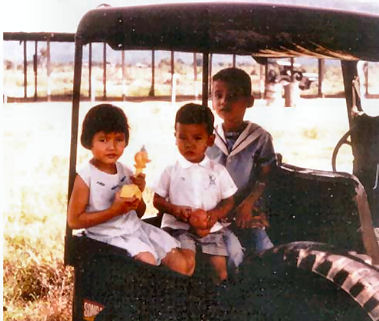 s
reasonably long, the approach was rather hairy due to a vicious wind
shear caused by offshore winds on the cliff, and a forest of aerials
on the approach path. Both ensured my active concentration all the
way to the ground. After landing, we squeezed into the tiny parking
area beside a USAF C-123 Provider. We exchanged passengers and mail
with motors running.
s
reasonably long, the approach was rather hairy due to a vicious wind
shear caused by offshore winds on the cliff, and a forest of aerials
on the approach path. Both ensured my active concentration all the
way to the ground. After landing, we squeezed into the tiny parking
area beside a USAF C-123 Provider. We exchanged passengers and mail
with motors running. 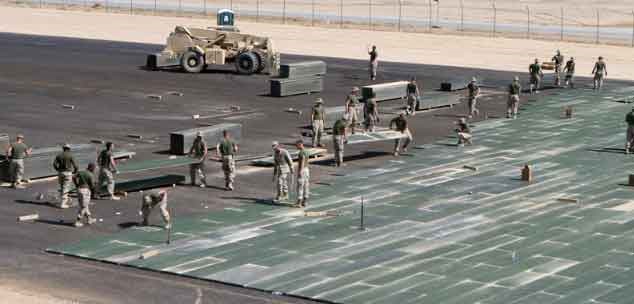 r
to laying acres of AM-2, solid aluminium matting similar to PSP but
without the holes, and a lot more forgiving on aircraft tyres.
Beyond the next range was Nha Trang, a large and beautiful coastal
city set in a narrow river valley whose mountain walls rise to
around 4000 feet. We approached from the south-west, across the
ranges, at 6000 feet. At this level the city was hidden from view
behind the mountains until we were quite close, when it was suddenly
revealed like a scene from a picture postcard. The blue mountains,
the verdant green valley, the sapphire sea and a magnificent white
Buddha towering over the city—those were unforgettable first
impressions.
r
to laying acres of AM-2, solid aluminium matting similar to PSP but
without the holes, and a lot more forgiving on aircraft tyres.
Beyond the next range was Nha Trang, a large and beautiful coastal
city set in a narrow river valley whose mountain walls rise to
around 4000 feet. We approached from the south-west, across the
ranges, at 6000 feet. At this level the city was hidden from view
behind the mountains until we were quite close, when it was suddenly
revealed like a scene from a picture postcard. The blue mountains,
the verdant green valley, the sapphire sea and a magnificent white
Buddha towering over the city—those were unforgettable first
impressions. 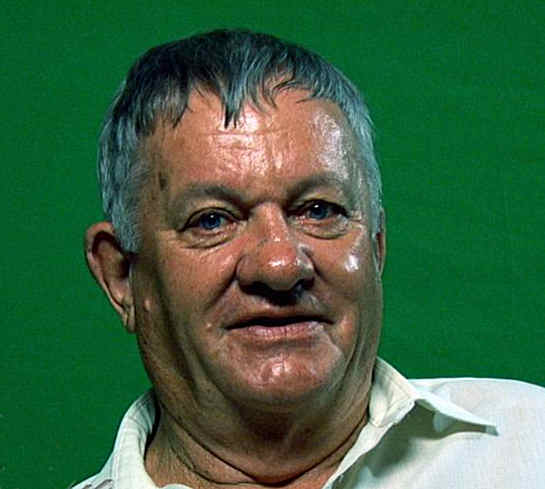 with
the universal American greeting. ‘We got nuthin’ much for yuh—just a
few bags of mail and six pax. The other Wallaby cleaned us out.’
This was good news for Malcolm ‘Bugs’ Rose, the crew chief, and his
assistant ‘Blue’ Campbell. Aside from the refuelling operation,
there would be little for them to do.
with
the universal American greeting. ‘We got nuthin’ much for yuh—just a
few bags of mail and six pax. The other Wallaby cleaned us out.’
This was good news for Malcolm ‘Bugs’ Rose, the crew chief, and his
assistant ‘Blue’ Campbell. Aside from the refuelling operation,
there would be little for them to do. 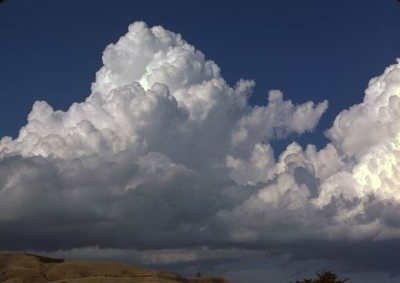 ham
between two equally thick slices of half-stale bread, with no
butter. Almost choking on my first mouthful, I threw the rest into
the nearest bin, much to Blue’s ill-concealed amusement. I bought a
Coke at TMC. After chatting to the crew of the other Wallaby we
fired up our Caribou again. This time the going was not so easy. The
afternoon clouds, initially cotton wool puffs, swelled rapidly into
bubbling cumulus towers as we headed west into the mountains. The
next three stops were mountain bases without radio navigation aids.
The only way to make a visual approach and landing at these bases in
these conditions was to descend visually through holes in the
rapidly increasing cloud cover, doing our best to adapt the spiral
descent to get down without compromising our safety by being too low
too far out from each airfield.
ham
between two equally thick slices of half-stale bread, with no
butter. Almost choking on my first mouthful, I threw the rest into
the nearest bin, much to Blue’s ill-concealed amusement. I bought a
Coke at TMC. After chatting to the crew of the other Wallaby we
fired up our Caribou again. This time the going was not so easy. The
afternoon clouds, initially cotton wool puffs, swelled rapidly into
bubbling cumulus towers as we headed west into the mountains. The
next three stops were mountain bases without radio navigation aids.
The only way to make a visual approach and landing at these bases in
these conditions was to descend visually through holes in the
rapidly increasing cloud cover, doing our best to adapt the spiral
descent to get down without compromising our safety by being too low
too far out from each airfield. 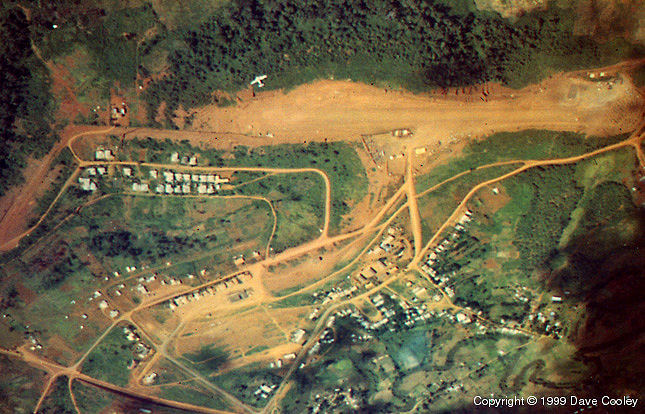 dividing
saddle had formed the unique dumbbell shaped, red gravel runway at
Gia Nghia. The bulldozers, of course, had to be airlifted in by
heavy helicopter. The result was a 2000-foot narrow ochre-red strip
with sheer drop offs at ends and sides, 2100 feet above sea level
and lashed by unpredictable winds. As I came bucking down finals
towards this incredible tabletop runway and realised I was going to
have to land on it, my adrenalin glands started pumping full bore. I
made a full STOL approach, arrived with a thump on the ground, and
pulled up in half the distance available in a cloud of dust thrown
up by the reverse thrust of the propellers. To use an Air Force
expression, the passengers sat behind us ‘fat, dumb and happy’,
unaware that I had chalked up a first.
dividing
saddle had formed the unique dumbbell shaped, red gravel runway at
Gia Nghia. The bulldozers, of course, had to be airlifted in by
heavy helicopter. The result was a 2000-foot narrow ochre-red strip
with sheer drop offs at ends and sides, 2100 feet above sea level
and lashed by unpredictable winds. As I came bucking down finals
towards this incredible tabletop runway and realised I was going to
have to land on it, my adrenalin glands started pumping full bore. I
made a full STOL approach, arrived with a thump on the ground, and
pulled up in half the distance available in a cloud of dust thrown
up by the reverse thrust of the propellers. To use an Air Force
expression, the passengers sat behind us ‘fat, dumb and happy’,
unaware that I had chalked up a first. 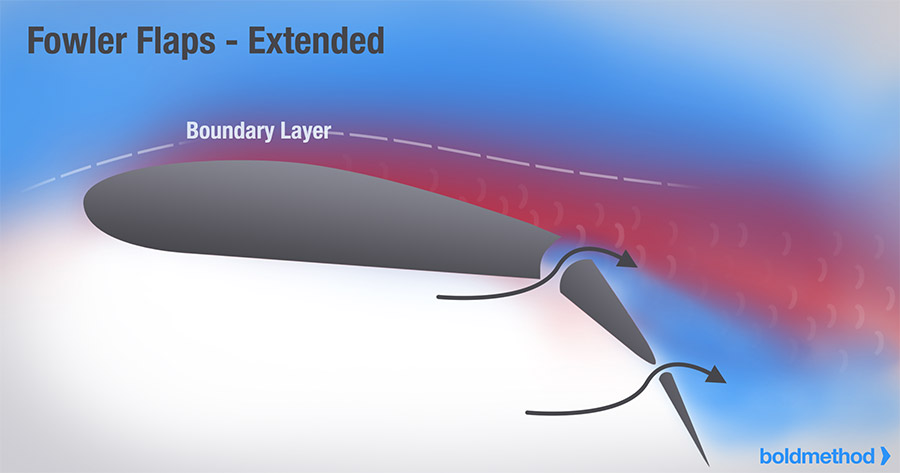 the inboard section with anhedral (angled down) and the outboard
with dihedral (angled up), and
the inboard section with anhedral (angled down) and the outboard
with dihedral (angled up), and
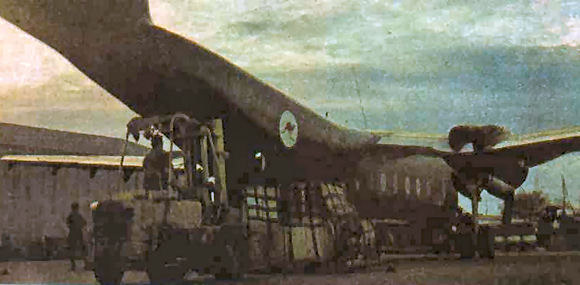 200-mile
run to Saigon. Dodging this way and that, we found a clear path out
of the highlands around the many large cloud build-ups that now
towered all around us. After diverting us around an air strike,
Paris Control left us to make our own way back to Saigon, and we
were soon back again in the babble and roar of Tan Son Nhut. The
return flight to Vung Tau was an anticlimax. Once again, I was tired
and thirsty.
200-mile
run to Saigon. Dodging this way and that, we found a clear path out
of the highlands around the many large cloud build-ups that now
towered all around us. After diverting us around an air strike,
Paris Control left us to make our own way back to Saigon, and we
were soon back again in the babble and roar of Tan Son Nhut. The
return flight to Vung Tau was an anticlimax. Once again, I was tired
and thirsty. 